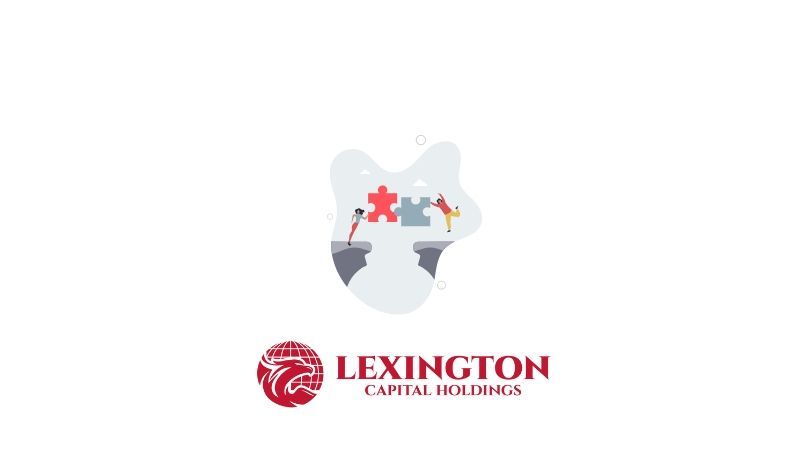The Business Owner’s Guide to Using Credit Lines Effectively
The Business Owner’s Guide to Using Credit Lines Effectively
As a business owner, access to the right financial tools can mean the difference between thriving in a competitive market or struggling to stay afloat. One of the most versatile and powerful tools in your financial arsenal is a business line of credit. When used effectively, it can provide flexibility, help manage cash flow, and open doors to growth opportunities.
But how do you make the most of your credit line without falling into financial pitfalls? Here’s a comprehensive guide to using credit lines effectively for your business.
1. Understand What a Credit Line Offers
A business line of credit is a flexible financing option that provides you with a predetermined credit limit. Unlike a traditional loan, you only pay interest on the amount you use, not the entire credit line. This makes it ideal for managing short-term needs, such as covering payroll, purchasing inventory, or handling unexpected expenses.
Key benefits include:
- Flexibility: Draw funds as needed and repay on your schedule.
- Revolving access: Once repaid, the funds become available again.
- Improved cash flow: Bridge gaps during seasonal slowdowns or delayed payments from customers.
2. Align Usage with Business Goals
A line of credit is most effective when aligned with your business strategy. Use it to:
- Smooth out cash flow: Handle routine operational expenses during slower periods.
- Seize opportunities: Invest in inventory or marketing during peak seasons.
- Cover emergencies: Address unexpected repairs or equipment replacements.
Avoid using a line of credit for long-term investments or large capital expenditures. For those needs, consider alternative financing options like term loans or equipment financing.
3. Borrow Strategically and Stay Organized
Treat your line of credit as a tool for growth, not a crutch for poor financial management. Here’s how to use it responsibly:
- Plan your draws: Only withdraw funds when you have a clear repayment plan.
- Track your usage: Keep detailed records to understand how the credit line impacts your cash flow.
- Stay within limits: Avoid maxing out your credit line, as it can harm your credit score and increase interest costs.
Consider creating a financial calendar to track repayment schedules and ensure timely payments to avoid penalties.
4. Understand the Costs and Terms
Not all credit lines are created equal. Before applying or drawing on a line of credit, review the terms carefully:
- Interest rates: Compare rates across lenders to find the most competitive option.
- Fees: Watch out for hidden costs like maintenance fees, draw fees, or prepayment penalties.
- Repayment terms: Ensure the repayment schedule aligns with your business’s cash flow cycle.
At Lexington Capital Holdings, we pride ourselves on offering competitive, transparent credit lines tailored to your business needs. Our clients enjoy flexibility and peace of mind knowing they’re working with a trusted partner.
5. Build a Strong Financial Foundation
A credit line works best when used in conjunction with a solid financial strategy. To maximize its benefits:
- Monitor cash flow regularly: Keep a close eye on inflows and outflows to anticipate funding needs.
- Maintain a strong credit score: A higher score ensures better terms and lower interest rates.
- Review financial performance: Regularly assess how the credit line impacts your bottom line.
By integrating these practices, you can avoid over-reliance on credit and ensure it serves as a tool for growth rather than a source of debt.
6. Leverage Expert Guidance
Partnering with the right financial advisor or lender can make all the difference. A knowledgeable team can:
- Help you identify the right credit line: Tailored to your business size, industry, and goals.
- Offer insights into repayment strategies: To minimize costs and maximize flexibility.
- Provide ongoing support: Ensuring you’re always on track.
At Lexington Capital Holdings, we’re more than just a lender—we’re your partner in business success. Our team works closely with business owners to understand their unique challenges and provide financing solutions that drive results.
Conclusion
A business line of credit is a powerful tool that, when used effectively, can help your company weather challenges, capitalize on opportunities, and achieve long-term growth. By understanding its purpose, aligning its use with your goals, and managing it responsibly, you can unlock its full potential.
If you’re ready to take your business to the next level, contact Lexington Capital Holdings today. Let’s explore how a business line of credit can support your success.

When you apply for business funding, your application goes through a critical stage—underwriting. This is where lenders evaluate risk and determine whether your business qualifies for financing, and under what terms. Understanding what underwriters look for can help you strengthen your application, avoid delays, and increase your approval odds.

Not every business enjoys a steady stream of income. For many companies—especially those in seasonal industries, contracting, or project-based work—revenue can shift dramatically from month to month. These ups and downs are normal, but they can make managing cash flow, payroll, and operating expenses challenging. At Lexington Capital Holdings, we understand that fluctuating revenue doesn’t mean instability—it just means you need the right financial tools to stay balanced and grow confidently.

The Challenge of Hyper-Growth For many startups, growth isn’t the problem—it’s managing it. Rapid scaling demands capital for hiring, marketing, technology, and operations. But too often, founders find themselves cash-strapped right when they need resources the most. Choosing the right financing strategy can be the difference between sustainable growth and burning out too soon.

When it comes to business financing, the terms you secure are just as important as the funding itself. Lower interest rates, flexible repayment schedules, and higher approval amounts can mean the difference between simply surviving and setting your business up to thrive. The good news? Business owners often have more negotiating power than they realize. At Lexington Capital Holdings, we’ve seen firsthand how preparation and strategy can help secure stronger terms. Here’s how you can do the same:

For many businesses, waiting on customer payments can feel like standing still when you’re ready to move forward. Delayed invoices, extended payment terms, or slow collections create cash flow gaps that make it harder to cover expenses, pay employees, or seize new opportunities. The truth is—even successful, profitable companies face this challenge. The key isn’t avoiding it, but managing it strategically with the right funding solutions

Securing business funding is a milestone—but the real impact comes from how you put that capital to work. Every dollar borrowed should fuel momentum, strengthen operations, and generate measurable returns. Unfortunately, too many businesses stop at “getting approved” and miss the chance to maximize their return on investment (ROI). At Lexington Capital Holdings, we believe funding isn’t just about access to capital—it’s about creating opportunity. Here’s how to ensure your financing delivers the highest ROI:

In today’s fast-paced business environment, standing out from the competition requires more than just great products and services—it takes strategy, timing, and smart financial decisions. One of the most overlooked tools in building and maintaining a competitive advantage is business financing. When leveraged correctly, financing doesn’t just help you “get by”; it can actually position your business to outpace competitors and capture new opportunities.

In business, surprises aren’t a matter of if—they’re a matter of when. Whether it’s a sudden equipment breakdown, an unexpected dip in sales, or a market shift that requires quick adaptation, unforeseen expenses can test even the most successful companies. The difference between thriving and struggling often comes down to how well you’ve prepared.

When most business owners hear the word debt, it sparks feelings of stress or risk. But here’s the truth—debt isn’t always a bad thing. In fact, when managed strategically, debt can become one of the most powerful tools to grow, stabilize, and scale your business. At Lexington Capital Holdings, we work with business owners every day who are navigating this very question: Is taking on debt the right move for me? Let’s break down the difference between “good” and “bad” debt so you can make informed financial decisions.

In today’s business world, financing options are everywhere—but choosing the right path can feel overwhelming. From traditional bank loans to alternative lending solutions, the fine print and fast-changing requirements often leave business owners spending more time deciphering funding terms than actually running their businesses. That’s where the value of a dedicated funding advisor truly shines. At Lexington Capital Holdings, we’ve seen firsthand how personalized guidance can transform the funding experience for business owners of all sizes.

